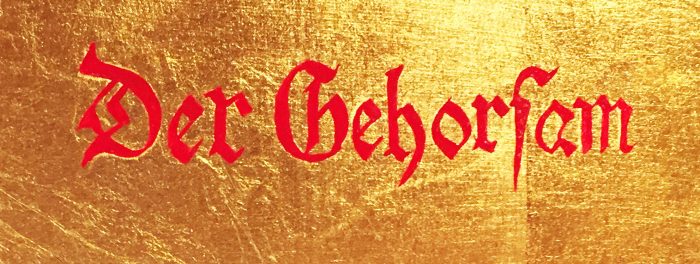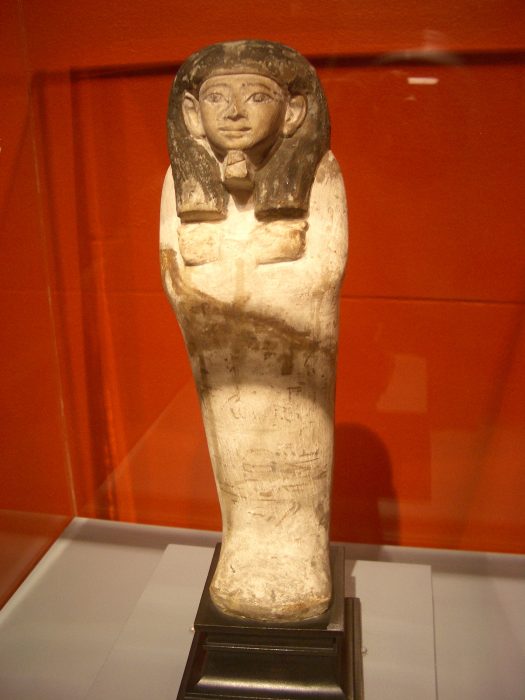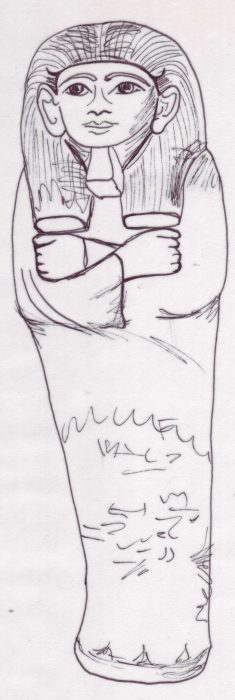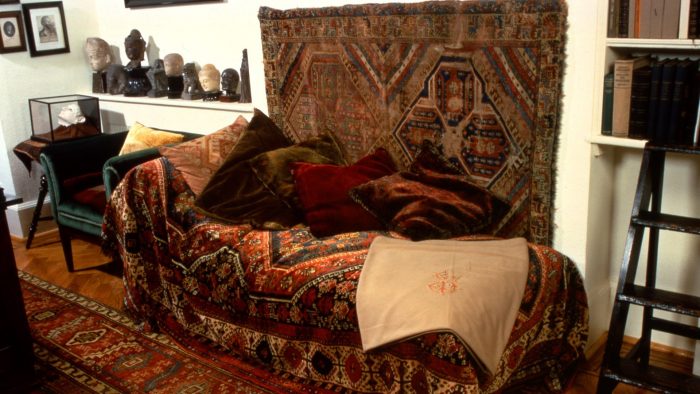Freud’s Shabti
This painting a small Egyptian tomb figure, a shabti, is one of my twelve smaller gilded paintings which together form Significantly Freud: Icons for a Jewish Atheist, representing my favourite twelve artefacts from the private collection of Sigmund Freud.
Freud’s shabti is an Egyptian tomb object that was supposed to aid the deceased in their everyday after-life as workers. The name “shabti” means “I answer”. Freud’s limestone shabti is from the New Kingdom, Egypt, about 1450 BC. It is about 280 mm high.
Freud lived at a time of momentous archaeological discoveries – Arthur Evans and the Minoans in Crete, Heinrich Schliemann’s excavation of the ancient city of Troy, Howard Carter’s Tomb of Tutankhamen. Freud also learned to read hieroglyphics (and if you look carefully you will find the word Shabti in hieroglyphics on this painting) and was obsessed with all the rituals for the dead in the ancient world.
The collections on Freud’s desk and shelves were rearranged almost daily. Eventually he could hardly move in his study because of the number of antiquities.

Der Gehorsam (Obedience)
The painted red script, Der Gehorsam, translates as “Obedience”. For me this signifies the need humans have for support structures such as family, friends and a benevolent state.

Freud’s shabti figure of Senna is from the Egyptian New Kingdom (18th Dynasty), Tuthmosis III – Amenophis IV, 1479 – 1400 BC. It is made from limestone and is 28.5 x 8.7 x 8.3 cm in size.
“This shabti of a man has a sensitively modelled face with distinctive eyes, large ears and a square beard. The hands are crossed on the chest. Though the hieroglyphs have faded, the owner’s name was Senna. The shabti is inscribed with a chapter from The Book of the Dead. It is translated as: ‘O shabti allotted to me! If I be summoned or if I be detailed to do any work which has to be done in the realm of the dead, if indeed obstacles are implanted for you therewith as a man at his duties, you shall detail yourself for me on every occasion of making arable the fields, of flooding the banks, or of conveying sand from east to west: ‘Here am I!’, you shall say.’ (Janine Burke, Sigmund Freud’s Collection, University of Sydney, March 2008).

One of my original sketches for this painting.

The colour of the frame and desktop in this painting was inspired by the worn old leather chairs from Freud’s consulting room and study.